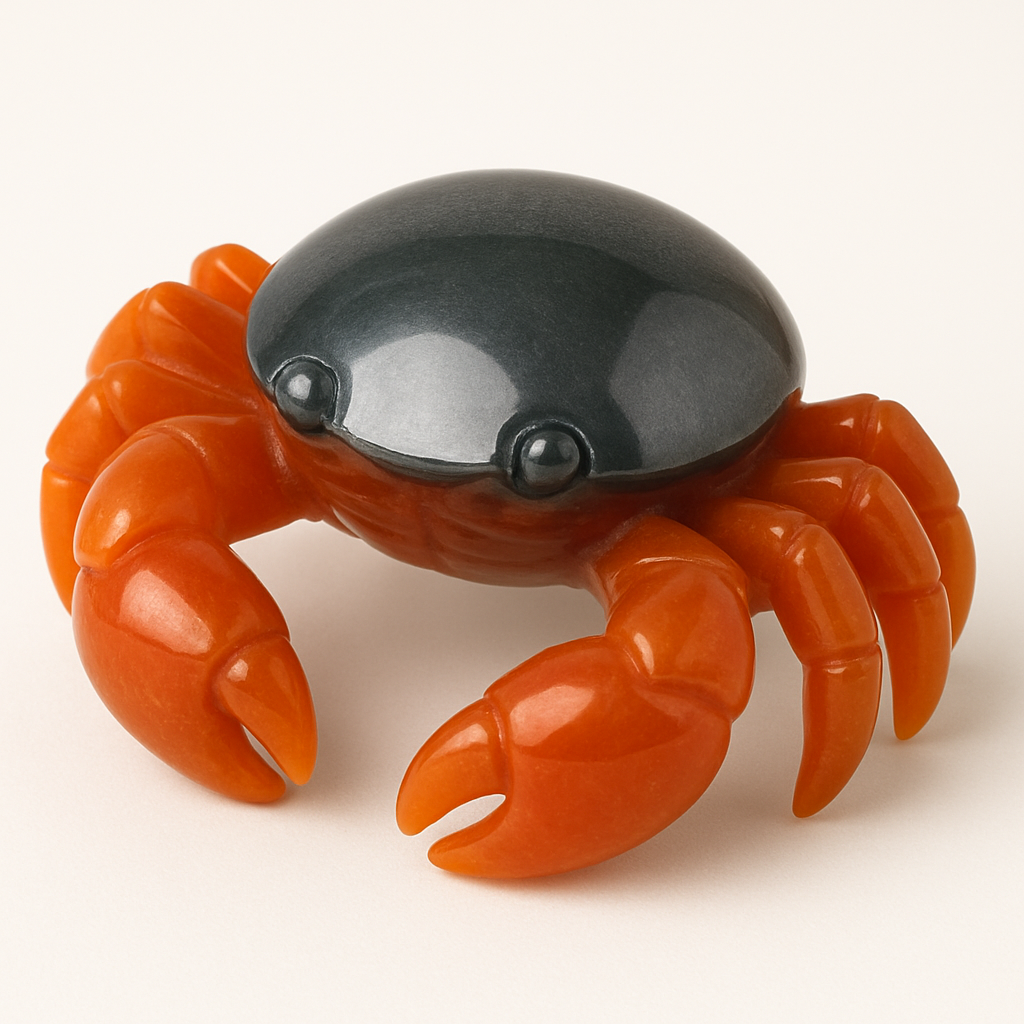
The Symbolism of Crabs
Share
Side-stepping across the shore, armored and ancient, the crab moves not in haste but in deliberate rhythm, sensing danger before it arrives and retreating into stillness as easily as it emerges into motion. It is a creature of boundaries, both physical and symbolic, embodying protection of the self, cyclical renewal, and emotional sensitivity held beneath a guarded exterior.
To contemplate the crab is to witness the archetype of the inward path—the being who does not charge forward, but moves sideways, inward, and within, protecting the soft essence of self beneath a hardened shell.
The Shell-Bearer in Cultural Memory
The crab has long held symbolic resonance as a creature of cycles, tides, and lunar wisdom. Its connection to the water and the moon binds it to the rhythms of feeling, hidden movement, and emotional tides.
In ancient Egyptian cosmology, the crab was linked with the zodiacal sign of Cancer, appearing in early star maps as a symbol of maternal instinct and protective energy. As the moon governs Cancer, so too does the crab reflect the ebb and flow of inner life, often unseen by others.
In various Indigenous and coastal traditions, crabs are seen as keepers of shoreline energy—beings that exist at the threshold between land and sea, between known and unknown, between exposure and retreat. Their presence marks transition, guarded intuition, and the power of timing.
The crab, while not exalted as a predator or divine messenger, holds symbolic power in its ability to survive by adaptation, by listening, and by holding still when necessary.
Protection, Intuition, and Cycles of Shedding
The crab is covered in armor, yet its true strength lies beneath. It is soft, sensitive, and inwardly attuned. Its shell is not aggression—it is preservation. Its sideways movement is not confusion—it is a different kind of awareness, one that navigates around conflict rather than into it.
Crabs must molt—shedding their exoskeletons as they grow. In this process, they become vulnerable, their new shell soft until it hardens. This cycle of guarding, releasing, renewing mirrors the seeker’s own emotional growth—the need to let go of former protections, to endure the exposure of transformation, and to emerge stronger, yet never invulnerable.
The crab teaches that sensitivity is not weakness, but something to be respected and managed with care.
Resonance with the Energy Centers
The crab resonates primarily with the orange-ray energy center—the sacral chakra, which governs emotion, relational flow, creative sensitivity, and personal boundaries.
This resonance is expressed in the crab’s close relationship with water, its strong emotional and environmental attunement, and its deep need for safety while still participating in the dance of interaction. The crab does not isolate—it orbits, approaches, and withdraws, always in balance with its feeling state.
There is also a secondary resonance with the red-ray energy center—the root chakra, which governs physical security, instinctual response, and grounded survival. The crab’s armor, its burrowing, and its retreat behaviors reflect the red-ray’s instinctual drive to preserve the physical vehicle. It is not reckless; it is aware of danger and rooted in the need to protect the vessel of consciousness.
Together, these rays—orange and red—form the energy of emotional depth guarded by instinct, a being who teaches how to feel deeply while maintaining boundaries, and how to shed and renew without abandoning caution.
The Spiral Path Inward
To walk with the crab is to walk the spiral path, not the straight line. It teaches that truth is not always found by charging ahead—but sometimes by moving sideways, sensing, adjusting, and withdrawing when the soul requires time.
It reminds the seeker that armor has a purpose—but must also be shed in time. That emotional sensitivity is not to be erased—but honored and protected. That growth often comes not from expanding outward—but from deepening within.
The crab does not chase the horizon.
It waits for the tide.
And when the moment is right, it moves—not in haste, but in knowing.
It teaches:
Guard what is soft. Trust the shell. But do not fear the molt.